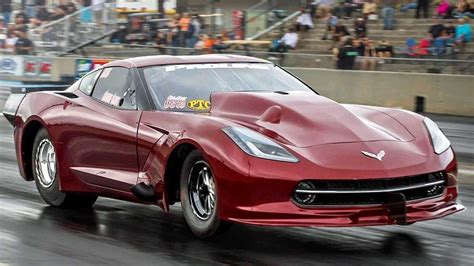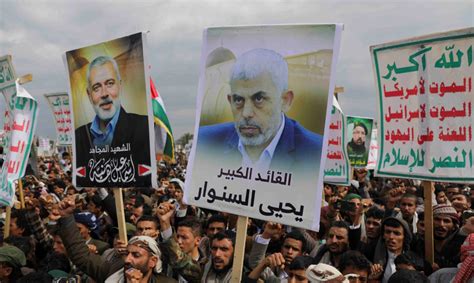
A Corvette C8.R race car briefly became airborne during the IMSA WeatherTech SportsCar Championship race at the Circuit of the Americas (COTA) in Austin, Texas, startling drivers and fans alike, and prompting discussions about track safety.
Austin, Texas – A dramatic moment unfolded during the IMSA WeatherTech SportsCar Championship race at the Circuit of the Americas (COTA) on Sunday, as the No. 3 Corvette C8.R, driven by Antonio Garcia, launched into the air after encountering a bump on the track. The incident, which occurred on the penultimate lap of the race, sent shockwaves through the racing community and ignited a debate about track conditions and their impact on modern sports car racing.
The incident occurred as Garcia was battling for position in the GTD Pro class. Approaching Turn 1, the Corvette appeared to hit an uneven surface, causing it to become momentarily airborne. Video footage of the incident quickly circulated online, showcasing the car’s unexpected flight and subsequent hard landing. The dramatic sequence left spectators and fellow drivers stunned, prompting immediate concerns about Garcia’s well-being and the safety of the track itself.
“The Corvette briefly took flight after hitting a bump at the track,” a statement from IMSA confirmed. The statement acknowledged the incident and emphasized that Garcia was able to maintain control of the vehicle and continue racing. Despite the jarring experience, Garcia managed to bring the No. 3 Corvette home, albeit with visible damage to the car. The team later confirmed that the impact had caused significant damage to the undercarriage and aerodynamic components.
“I’m okay, but the car definitely isn’t,” Garcia reported to his team after the race. “It was a pretty wild ride. I didn’t expect that at all.” His immediate reaction underscored the unexpected nature of the incident and the potential risks involved in pushing race cars to their limits on challenging circuits.
The airborne Corvette immediately triggered discussions within the racing community regarding the track’s surface and its suitability for high-performance vehicles. COTA, known for its challenging layout and elevation changes, has been a staple on the IMSA calendar for several years. However, concerns about bumps and undulations on the track surface have been raised periodically by drivers and teams.
“We’ve been talking about these bumps for a while now,” said a driver from a competing team, who requested anonymity. “It’s not just this one spot; there are several places where the track is getting pretty rough. It’s something that needs to be addressed.”
The incident involving the Corvette is expected to prompt a thorough review of the track conditions by IMSA and COTA officials. Measures may be taken to smooth out the affected areas and ensure that the track meets the required safety standards for future races. The safety of drivers and the integrity of the competition are paramount, and any potential hazards must be addressed proactively.
The COTA incident serves as a stark reminder of the inherent risks involved in motorsports and the importance of maintaining track safety. While racing often pushes vehicles and drivers to their limits, ensuring a safe and predictable environment is crucial for the well-being of all participants. As the investigation into the incident unfolds, the racing community will be closely watching for any steps taken to address the track’s condition and prevent similar occurrences in the future. The race continued with the No. 74 Riley Motorsports Ligier JS P320 securing the victory.
The unexpected flight of the Corvette also highlights the advanced engineering and safety features of modern race cars. Despite the violent impact, Garcia emerged unharmed, a testament to the structural integrity and protective measures built into the C8.R. The incident underscores the ongoing efforts by manufacturers and sanctioning bodies to enhance driver safety and mitigate the risks associated with high-speed racing. The incident did leave a mark, however, with team officials confirming significant damage to the car’s aero and underside.
“The car will be sent back to the shop for a thorough inspection and repairs,” a team spokesperson stated. “We’re grateful that Antonio is okay, and we’ll do everything we can to get the car back on track as soon as possible.” The team’s commitment to repairing the damaged Corvette reflects the dedication and passion that drive motorsports, even in the face of unexpected challenges.
The incident at COTA is not an isolated case. Similar incidents involving race cars becoming airborne have occurred at other tracks around the world, often due to a combination of factors such as track undulations, aerodynamic forces, and suspension settings. These incidents underscore the complex interplay between vehicle dynamics and track conditions and the need for constant vigilance to ensure driver safety.
The incident involving the No. 3 Corvette C8.R at COTA is a significant event that will likely have lasting implications for the sport. It has raised important questions about track safety, vehicle dynamics, and the ongoing efforts to mitigate the risks associated with high-speed racing. As the racing community reflects on this dramatic moment, the focus will undoubtedly be on ensuring that similar incidents are prevented in the future.
The race itself, overshadowed by the Corvette’s aerial adventure, saw intense competition across all classes. The No. 74 Riley Motorsports Ligier JS P320, driven by Gar Robinson and Josh Burdon, ultimately secured the victory. However, the talking point of the race remained firmly fixed on Garcia’s brief but spectacular flight.
“It’s definitely something I’ll remember for a long time,” Garcia said with a wry smile. “Hopefully, next time I’ll stay on the ground.” His lighthearted comment belied the seriousness of the incident, but it also reflected the resilience and determination that are characteristic of racing drivers.
The racing community now waits to see what actions IMSA and COTA officials will take in response to the incident. A thorough investigation is expected, and potential solutions could include track resurfacing, suspension adjustments, and revised aerodynamic regulations. Whatever the outcome, the incident serves as a reminder of the ever-present dangers in motorsports and the ongoing need for vigilance and innovation to ensure the safety of all participants.
The Corvette incident at COTA has also sparked a broader discussion about the evolution of race car design and its interaction with track infrastructure. As cars become increasingly sophisticated and aerodynamic, the demands on track surfaces also increase. Maintaining a smooth and predictable track surface is essential for ensuring that cars perform as intended and that drivers remain safe.
“The cars are getting faster and more sensitive to track conditions,” said a prominent race engineer. “We need to make sure that the tracks can keep up with the pace of development.” His comment highlights the importance of a collaborative approach between race teams, sanctioning bodies, and track operators to ensure that motorsports remains both exciting and safe.
The ripple effects of the incident may also extend to other racing series and tracks around the world. Many tracks are already undergoing renovations and improvements to enhance safety and performance. The COTA incident could serve as a catalyst for further investment in track infrastructure and technology, ensuring that racing remains a thrilling and safe spectacle for years to come.
The incident also came on the heels of other concerns being raised about the track, including some drivers suggesting the track was not race-ready. These concerns were magnified by the Corvette incident and added fuel to the already burning fire. COTA officials will be under immense pressure to ensure track safety going forward.
In conclusion, the Corvette’s unexpected flight at COTA was a dramatic and concerning event that has sparked a wide-ranging discussion about track safety, vehicle dynamics, and the future of motorsports. While the incident was certainly a shock, it also presents an opportunity for the racing community to learn and improve, ensuring that racing remains a thrilling and safe sport for both participants and fans. The focus now shifts to the investigations and decisions that will follow, shaping the future of racing at COTA and beyond.
Further Details on the Car’s Condition:
Following the incident, the No. 3 Corvette C8.R was immediately taken back to the team’s paddock for a preliminary assessment. The initial findings indicated significant damage to the car’s underbody, particularly around the diffuser and rear suspension components. Aerodynamic elements, such as the rear wing and splitter, also sustained damage from the impact with the track surface.
“The impact was quite severe,” explained a member of the Corvette Racing crew. “We’re still assessing the full extent of the damage, but it’s clear that the car will require extensive repairs.”
The team is now working diligently to determine the feasibility of repairing the car in time for the next race on the IMSA schedule. Given the complexity of the repairs and the specialized components involved, the task is expected to be challenging.
“We’ll do everything we can to get the car back on track as soon as possible,” the team spokesperson affirmed. “The Corvette is a resilient machine, and we’re confident that we can overcome this setback.”
Expert Opinions on the Aerodynamic Effects:
The airborne incident has also prompted discussions among aerodynamic experts regarding the potential factors that contributed to the Corvette’s unexpected flight. While the track bump was undoubtedly a primary cause, the car’s aerodynamic configuration may have also played a role.
“Modern race cars generate a tremendous amount of downforce, which helps them stick to the track,” explained an aerodynamicist. “However, if the car encounters a sudden change in elevation, the downforce can quickly transition to lift, causing the car to become airborne.”
The expert added that the Corvette’s low ride height and aggressive aerodynamic package may have made it particularly susceptible to this phenomenon. Further analysis of the car’s telemetry data and aerodynamic simulations will be needed to fully understand the contributing factors.
Track Condition Concerns:
In the wake of the incident, many drivers and teams have voiced concerns about the overall condition of the Circuit of the Americas track surface. While COTA is generally regarded as a world-class facility, some areas of the track have become increasingly bumpy and uneven over time.
“The track is definitely showing its age,” said one experienced driver. “There are several spots where the bumps are quite pronounced, and they can upset the car’s handling.”
The bumps are believed to be caused by a combination of factors, including ground movement, weather conditions, and the heavy use of the track by various racing series. COTA officials have acknowledged the concerns and have indicated that they are working to address the issue.
“We are aware of the bumps on the track surface and are actively evaluating options for remediation,” a COTA spokesperson stated. “Our goal is to provide a safe and competitive racing environment for all participants.”
Potential Solutions:
Several potential solutions have been proposed to address the track condition concerns at COTA. These include:
-
Resurfacing: A complete resurfacing of the affected areas would provide a smooth and even track surface, eliminating the bumps that caused the Corvette to become airborne. However, resurfacing is a costly and time-consuming process.
-
Grinding: Grinding down the high spots on the track surface would be a less expensive and less disruptive alternative to resurfacing. However, grinding may not be effective in addressing all of the bumps.
-
Suspension Adjustments: Race teams can adjust their car’s suspension settings to better cope with the bumps on the track. However, this may compromise the car’s handling in other areas of the track.
-
Aerodynamic Modifications: Race teams can modify their car’s aerodynamic package to reduce its sensitivity to track bumps. However, this may also reduce the car’s overall downforce and performance.
The optimal solution will likely involve a combination of these approaches. COTA officials are currently evaluating the various options and are expected to announce their plans in the near future.
IMSA’s Response:
IMSA, the sanctioning body for the WeatherTech SportsCar Championship, has launched a thorough investigation into the Corvette incident. The investigation will focus on the track conditions, the car’s performance, and the driver’s actions.
“We are taking this incident very seriously,” said an IMSA spokesperson. “Our top priority is the safety of our drivers and participants.”
IMSA is working closely with COTA officials and the Corvette Racing team to gather all of the relevant information. The findings of the investigation will be used to determine whether any changes are needed to the track, the cars, or the racing regulations.
The incident will likely lead to increased scrutiny of track conditions at all IMSA events. IMSA is committed to ensuring that all tracks meet the highest safety standards.
The Future of Racing at COTA:
Despite the recent incident, the Circuit of the Americas remains a popular and important venue for motorsports. The track’s challenging layout and world-class facilities attract drivers and fans from around the world.
COTA officials are committed to addressing the track condition concerns and ensuring that the track remains a safe and competitive racing environment. The track is expected to undergo renovations and improvements in the coming years.
The future of racing at COTA is bright. The track is a valuable asset to the motorsports community, and COTA officials are determined to maintain its status as a premier racing destination.
Impact on Corvette Racing:
The Corvette Racing team is understandably disappointed by the incident at COTA. The team had high hopes for the race, and the airborne incident derailed their chances of a podium finish.
However, the team is determined to bounce back from this setback. The team is working hard to repair the damaged Corvette and get it back on track as soon as possible.
The Corvette Racing team has a long and successful history in motorsports. The team is known for its resilience and determination. The team is confident that it can overcome this challenge and continue to compete at the highest level.
Broader Implications for Motorsports Safety:
The Corvette incident at COTA has broader implications for motorsports safety. The incident highlights the importance of maintaining track conditions and ensuring that race cars are properly designed and maintained.
Motorsports is an inherently dangerous sport, but every effort must be made to mitigate the risks. Track owners, sanctioning bodies, and race teams must work together to ensure the safety of drivers and participants.
The incident at COTA serves as a reminder of the ongoing need for vigilance and innovation in motorsports safety. The racing community must continue to learn from incidents and strive to improve safety standards.
The lasting image of the race at COTA will undoubtedly be the sight of the Corvette briefly taking flight. While the incident was certainly dramatic, it also provides an opportunity for the racing community to reflect on the importance of safety and to work together to make motorsports even safer in the future.
FAQ:
-
What caused the Corvette to become airborne during the IMSA race at COTA?
- The Corvette became airborne after hitting a bump on the track surface near Turn 1.
-
Was the driver, Antonio Garcia, injured in the incident?
- No, Antonio Garcia was not injured. He was able to maintain control of the car and continue racing.
-
What damage did the Corvette sustain?
- The Corvette sustained significant damage to its undercarriage and aerodynamic components, including the diffuser, rear suspension, rear wing, and splitter.
-
What is IMSA’s response to the incident?
- IMSA has launched a thorough investigation into the incident, focusing on track conditions, the car’s performance, and the driver’s actions.
-
What are some potential solutions to address the track condition concerns at COTA?
- Potential solutions include resurfacing the affected areas, grinding down high spots, adjusting suspension settings on the cars, and modifying aerodynamic packages.
-
What other factors could have contributed to the incident beyond the track bump?
- Other contributing factors could include the car’s aerodynamic configuration, low ride height, and aggressive aerodynamic package, making it susceptible to changes in elevation and downforce transition.
-
Have there been concerns about the track surface at COTA prior to this incident?
- Yes, concerns have been raised periodically by drivers and teams about bumps and undulations on the track surface.
-
What does the incident highlight about the safety of modern race cars?
- The incident highlights the advanced engineering and safety features of modern race cars, as Garcia emerged unharmed despite the violent impact.
-
What was the outcome of the race, aside from the Corvette incident?
- The No. 74 Riley Motorsports Ligier JS P320, driven by Gar Robinson and Josh Burdon, secured the victory.
-
What is the Corvette Racing team doing to address the damage to the car?
- The team is sending the car back to the shop for a thorough inspection and repairs, with a commitment to getting it back on track as soon as possible.
-
Is there a timeline for when the repairs to the Corvette will be completed?
- There is no specified timeline for when repairs will be completed; the team will work diligently to get it back on track as soon as possible.
-
Is the Corvette Racing team confident in overcoming the setback?
- The Corvette Racing team is confident in overcoming the setback and continuing to compete at the highest level.
-
What other incidents of cars becoming airborne have occurred at racetracks around the world?
- Other similar incidents involving race cars becoming airborne have occurred due to track undulations, aerodynamic forces, and suspension settings.
-
What are some long-term improvements that could be made to the racetrack?
- Long-term improvements include resurfacing, grinding, suspension adjustments, and aerodynamic modifications to address track conditions.
-
What will IMSA consider in its investigation of the incident?
- IMSA’s investigation will consider track conditions, car performance, and the driver’s actions.
-
What kind of discussions are happening within the racing community due to this incident?
- The discussions involve track safety, vehicle dynamics, and ongoing efforts to mitigate the risks associated with high-speed racing.
-
Are other racing series or tracks likely to be affected by the investigation and its findings?
- Yes, the incident could lead to increased investment in track infrastructure and technology across various racing series and tracks.
-
Have there been other criticisms of COTA, in addition to the bump issue?
- Yes, some drivers suggested the track was not race-ready, further fueling concerns about track safety.
-
What is the overall message from the racing community in response to the accident?
- The overall message emphasizes the importance of continuous learning, improvement, and vigilance in motorsports safety to ensure the well-being of all participants.
-
How did Antonio Garcia describe the experience after the race?
- Garcia described the experience as “pretty wild” and something he didn’t expect, noting the car was definitely not okay.









